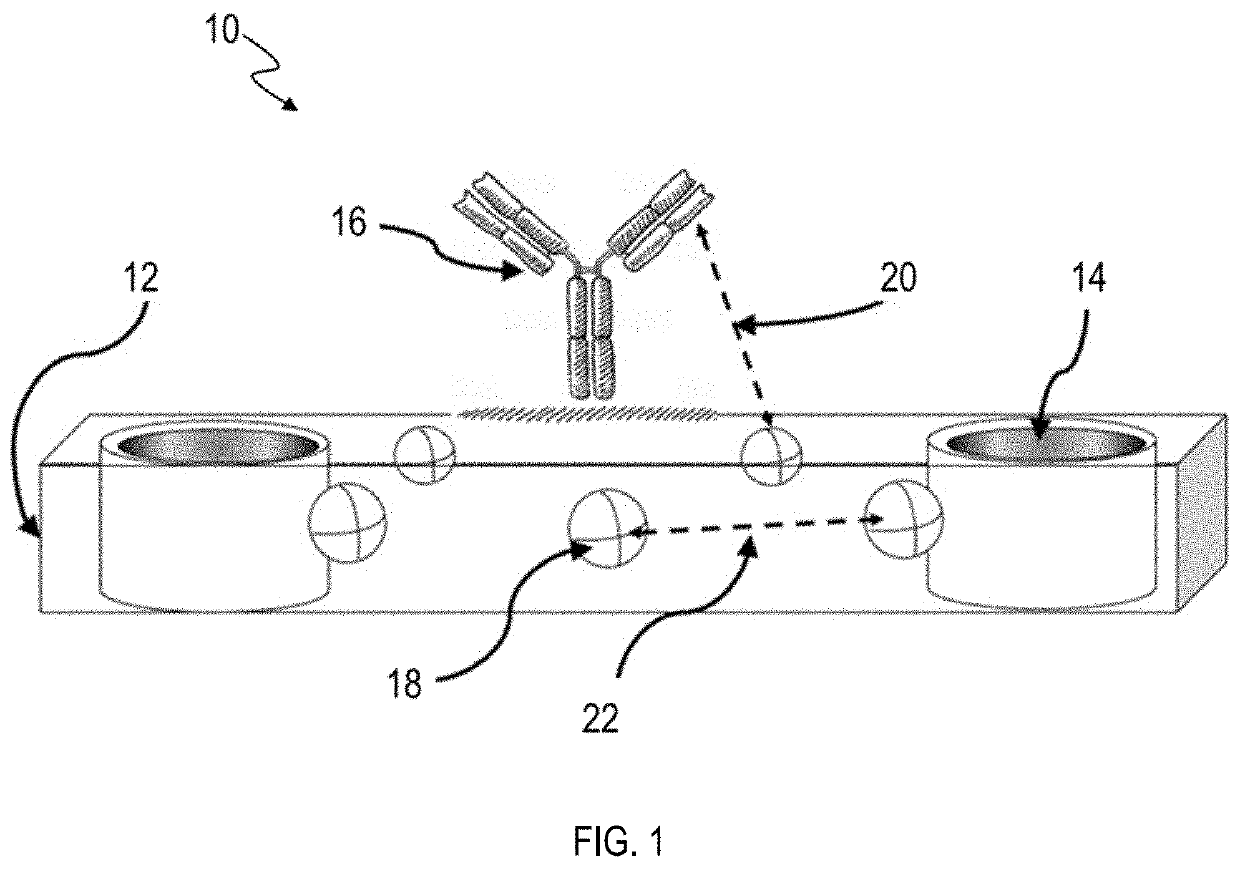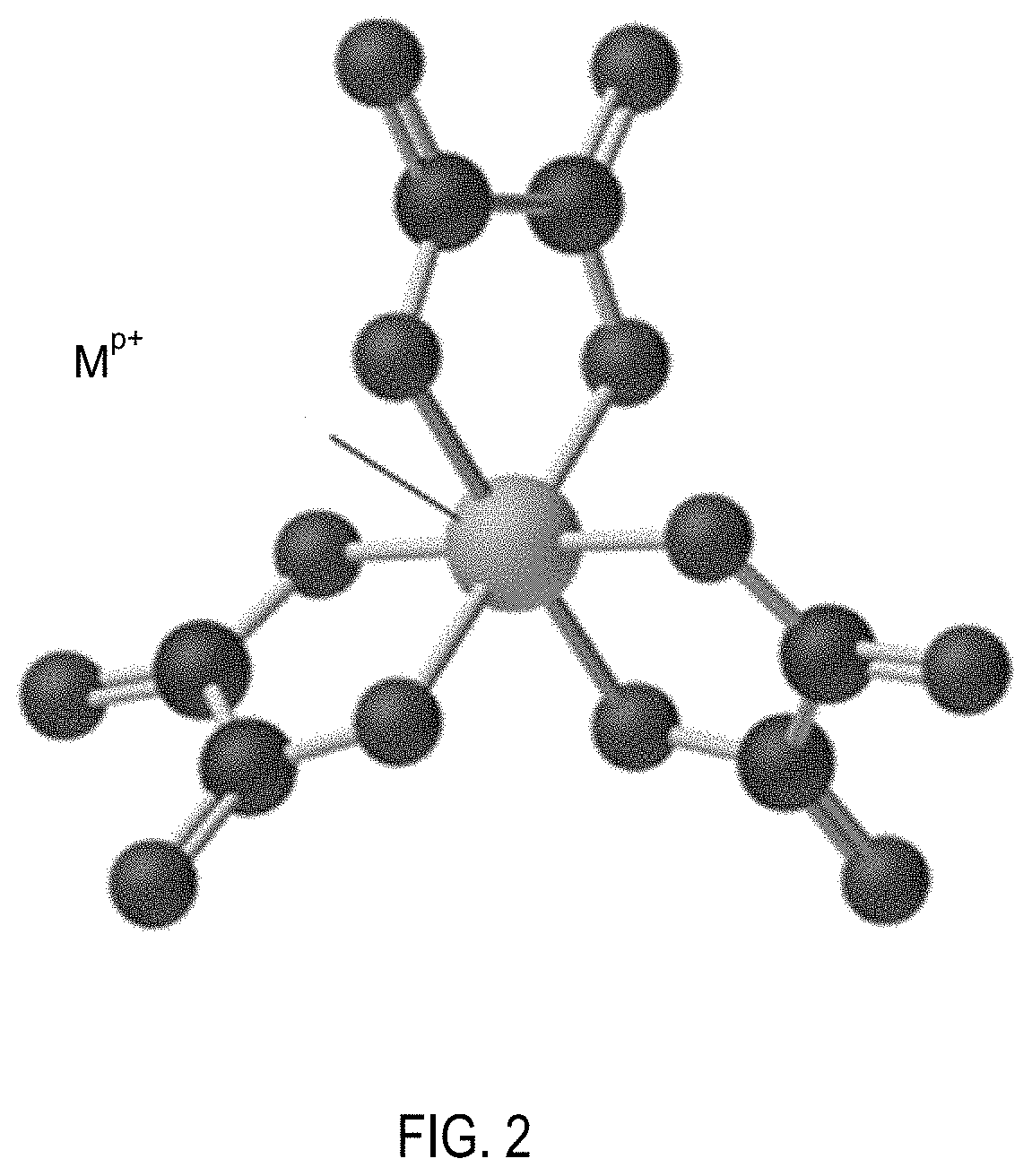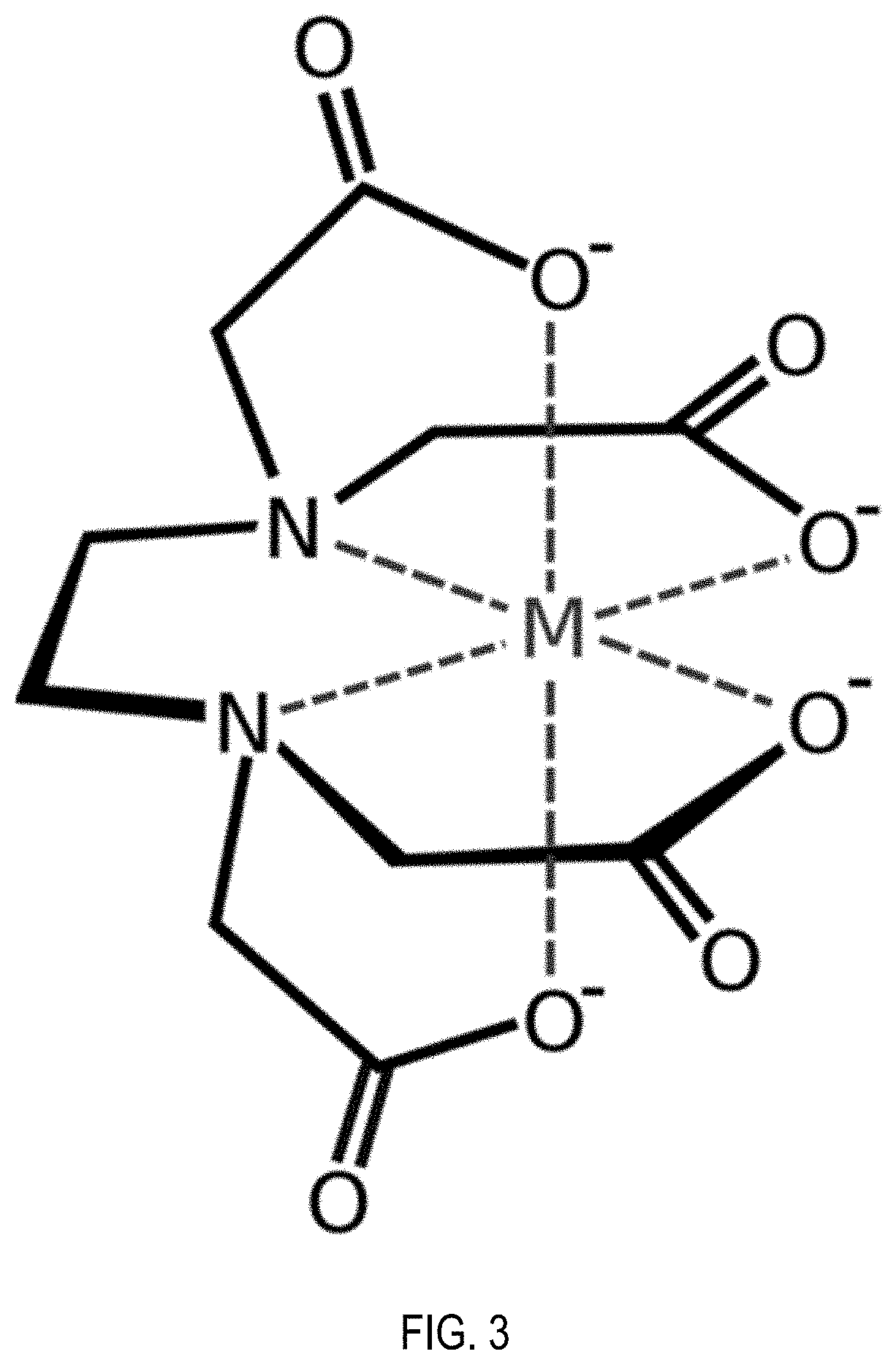Controlled doping of anodic aluminum oxide for enhanced fluorescence and methods of preparation
anodic aluminum oxide and enhanced fluorescence technology, applied in the field of nanostructured anodic aluminum oxide ceramic films and membranes, can solve the problems of complicated experimental procedures and high cost of metals involved, and achieve the effects of reducing costs, reducing costs, and improving fluorescence enhancemen
- Summary
- Abstract
- Description
- Claims
- Application Information
AI Technical Summary
Benefits of technology
Problems solved by technology
Method used
Image
Examples
example 1
[0041]FIG. 7 shows fluorescence results (vertical logarithmic scale) for fluorophore on a) Al-doped nano-structured ceramic film, b) Al-doped / Al-backed (aluminum metal backing), c) glass flat bottom with fluorophore, and d) glass with buffer only without fluorophore (blank). Fluorophore is goat polyclonal antibody to mouse, a tagged goat antibody, IgG H&L, distributed by Abcam a manufacturer of research antibodies, kits and assays for biological research, as ab150113. Host species goat. Target species mouse. The antibody, AlexaFluor 488, has been tested for suitability in the bio-assays ICC / IF, ELISA, Flow Cyt, IHC-P successfully. Excitation wavelength: 495 nm. Emission wavelength: 519 nm.
[0042]A mother fluorophore solution was prepared as 1:1000 of the purchased concentration (2 μg / ml). Dilution factors from ½ to 1 / 512 from the mother solution were then deposited in triplicate on a flat glass bottom, 96 well micro-plate, and values read with a BioTek Synergy 2 microplate reader aft...
example 2
[0044]FIG. 8 shows fluorescence results for an Al-doped nano-structured ceramic film and flat bottom (polystyrene) with Alamar Blue fluorophore at various volumes but constant concentration (1:1000). The blank sample contains buffer only without fluorophore (blank). All measurements were carried out in triplicate as bottom reads with 50% sensitivity setting on a PS flat bottom 96 well micro-plate BioTek Synergy 2 reader. Recommended bio-assay tests require 100 micro-liters of solution. For a 6.4 mm disc (typical of a 96 well microplate) the ceramic film requires only 10 micro-liters to cover and saturate the nano-structured ceramic. Constant fluorescence between 20-100 micro-liters for the doped nano-structured film is indicative that most of the fluorescence is coming from the enhanced contact volume, a direct indication the FRET is at work. Over 50% of the total fluorescence is due to this small volume in the Al-doped film. For the PS flat bottom wells the amount of fluorescence d...
example 3
[0045]FIG. 9 shows an example of a doped nano-structured ceramic with the aluminum backing left in place. Using a transition metal, such as Fe, iron as a nano-structured ceramic film containing iron oxalate, Fe2(C2O4)3 as FRET centers was prepared at concentrations between 0.01 and 0.0005 M and place into the anodizing solution. Through pore (no aluminum backing) analogue were also prepared for comparison purposes, both with thickness between 50-100 microns.
[0046]Discs were cut from these films measuring 11 mm in diameter were prepared and placed in a horizontal powder holder (SC15) of an FS5 (Edinburgh Instruments) spectrofluorometer. Fifty (50) μL of fluorophore solution was placed on the disc and after 5 minutes excitation-emission spectral maps were taken between 200-700 nm of the discs with and without fluorophores. Two fluorophores at micromolar concentrations were added separately and the emission spectrum measured near the manufacturer recommended excitation wavelengths, 525...
PUM
| Property | Measurement | Unit |
|---|---|---|
| concentration | aaaaa | aaaaa |
| volume | aaaaa | aaaaa |
| fluorescent | aaaaa | aaaaa |
Abstract
Description
Claims
Application Information
 Login to View More
Login to View More - R&D
- Intellectual Property
- Life Sciences
- Materials
- Tech Scout
- Unparalleled Data Quality
- Higher Quality Content
- 60% Fewer Hallucinations
Browse by: Latest US Patents, China's latest patents, Technical Efficacy Thesaurus, Application Domain, Technology Topic, Popular Technical Reports.
© 2025 PatSnap. All rights reserved.Legal|Privacy policy|Modern Slavery Act Transparency Statement|Sitemap|About US| Contact US: help@patsnap.com



